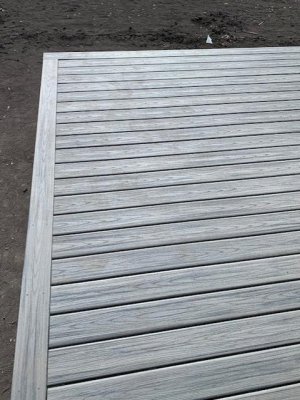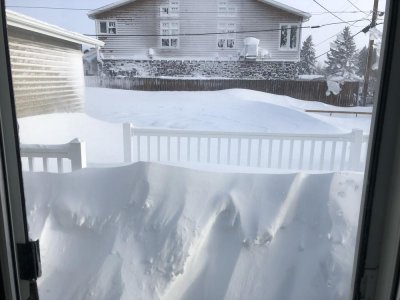Rust-Oleum’s RockSolid Composite Deck Refresh is marketed as a water-based toner and sealer designed to restore color and finish on faded composite wood decks, offering protection against water damage, UV graying, and mildew with a one-coat application and NeverWet water-repellency properties. It’s available in colors like Brown, Cedar, Redwood, and Gray, and is intended for wood-capped composite decks only. However, its performance is divisive based on user experiences and reviews.
Pros:
- Ease of Application: Many users find it straightforward to apply, drying quickly and cleaning up easily with soap and water. Some report excellent results, especially on faded decks, with the product restoring a like-new appearance when applied correctly.
- Initial Aesthetics: When it works, users praise the refreshed look, with some decks appearing vibrant and uniform after application. One user noted it worked well on a heavily faded pool deck, requiring only one coat in most areas.
- Protective Features: The product’s UV resistance, mildew protection, and water repellency are appealing for maintaining composite decks without costly replacements.
Cons:
- Color Inaccuracy: A common complaint is that the final color doesn’t match the can’s depiction. For example, the “Brown” tone often appears orange, and “Gray” can look tan, leading to disappointment and the need for additional coats or deck restaining.
- Poor Adhesion and Durability: Numerous users report issues like peeling, bubbling, or flaking within days to a year, even when following preparation instructions meticulously. Some attribute this to improper surface prep, but others insist the product itself fails, with water pooling under peeled areas causing further damage.
- Application Challenges: The product’s thin consistency can make it splatter, and achieving an even coat is difficult with stain pads or rollers. Some users describe it as labor-intensive and messy, with uneven coverage.
- Historical Context: The product is a rebranded version of Rust-Oleum’s Deck Restore, which faced a class-action lawsuit in 2018 due to widespread peeling and failure. Consumer feedback suggests RockSolid hasn’t significantly improved, with similar issues persisting.
Critical Considerations:
- Surface Prep is Critical: The product requires thorough cleaning with RockSolid’s recommended cleaners and a splash test to ensure water absorption. Failure to strip previous coatings or repair damaged boards can lead to adhesion issues.
- Not for Color Changes: It’s designed to refresh the existing deck color, not change it, which limits its versatility and catches some users off-guard.
- Mixed Long-Term Results: While some users report decks holding up well after years (especially with professional application), others describe catastrophic failures, including dry rot from trapped moisture under peeling coatings.
Verdict: RockSolid Composite Deck Refresh can work well for some, particularly on properly prepped, faded composite decks where the goal is to restore the original color. However, its inconsistent performance, frequent color mismatches, and history of peeling issues make it a risky choice. The product’s success seems heavily dependent on ideal conditions and meticulous preparation, which may not be feasible for all DIYers. Given the high cost (around $50–$60 per gallon) and reports of decks requiring costly repairs after failure, it’s hard to recommend broadly. If you’re considering it, test a small area first and ensure your deck meets the product’s specific requirements. Alternatively, explore other composite deck stains or consult a professional for options like sanding or board replacement


